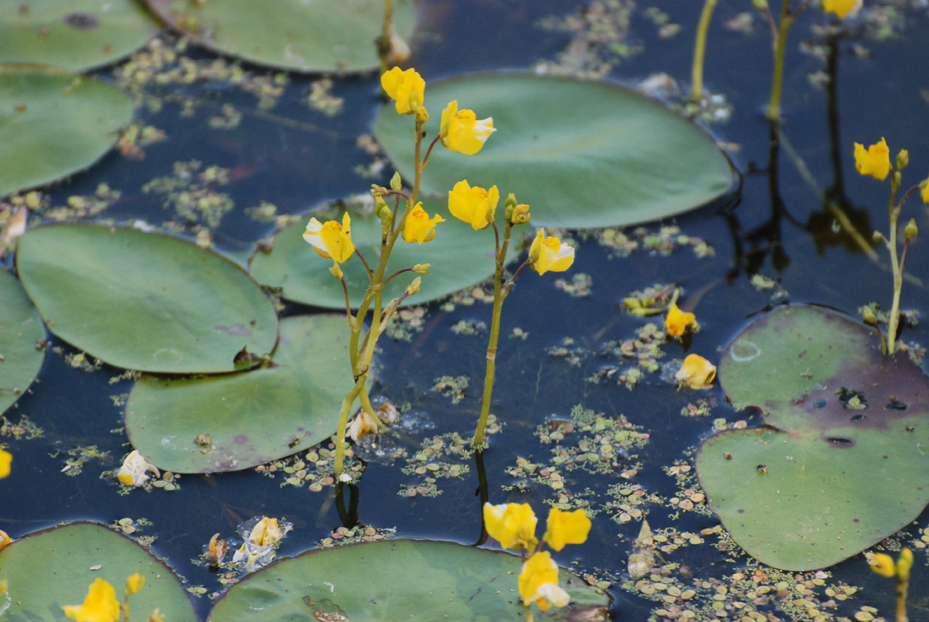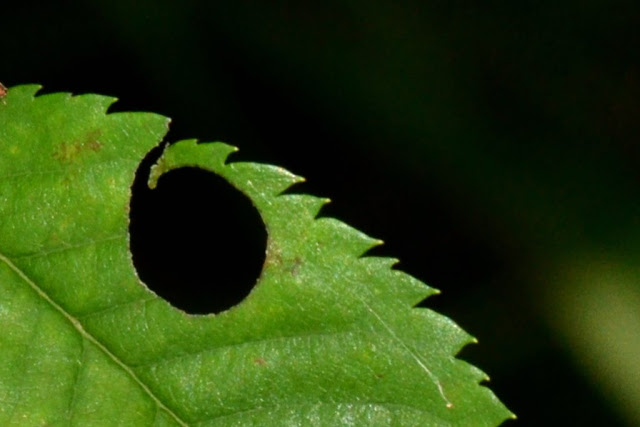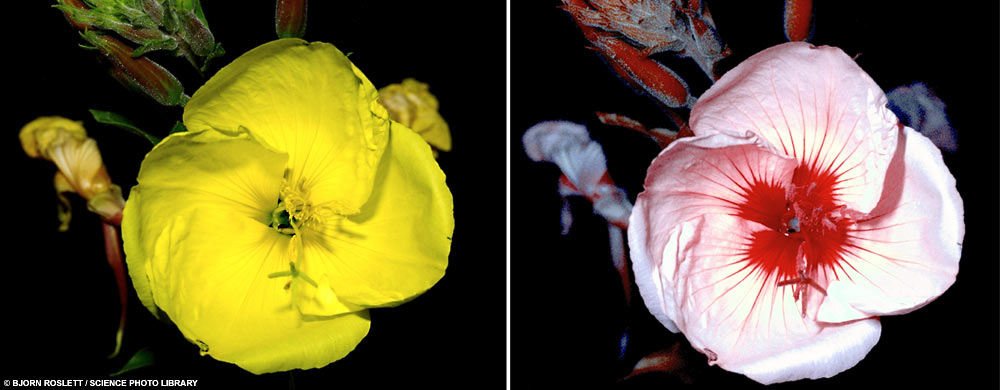How Plants Secretly Talk With Insects
At some point soon, I’ll finish the second part of this essay, describing hidden channels of communication in animals. At my typical pace, that’ll be ready for publication in about 34 years. But first, a little teaser — let’s learn about how plants and animals communicate with each other, specifically plants and insects.
Plants can communicate with animals … to ask for help
We’ve talked already about the sophisticated ways plants communicate to help defend themselves from attack — it’s now well-recognized that plants will emit volatile chemicals which waft away to warn other parts of the plant as well as neighbors about the attackers. Turns out that plants can also summon help from the animal kingdom, when under attack — when corn plants are munched on by caterpillars, they can secrete an odor that attracts caterpillar-eating wasps! Some chemical in the beet armyworm’s drool will trigger the leaves of corn seedlings to holler for protection from armyworm predators. They release a scent that attracts a wasp, who just so happens to love dining on the offending armyworm. Pretty clever, eh? In fact, if you’re an enterprising farmer, you might want to look into using this trick to defend your crop against aphids.
But insects are listening in…
But there’s also evidence that plant-eating insects are catching on to the chemical communication channels of their prey. Ted Farmer, the same guy who found evidence of an electrical nervous system in plants, has also stumbled on evidence that insects actively try to minimize the chemical defense signalling of the plants they munch on. (Check out his paper, Differential gene expression in response to mechanical wounding and insect feeding in Arabidopsis.)
Bugs that eat leaves often cut little circular holes out of the leaves. Dr. Farmer asked, why circular? Why not some other shape? Turns out, the bugs have learned they need to be careful not to trigger the chemical self-defense actions that the plant takes when it senses its leaves being damaged. So the bug should make as minimal cut in the leaf as possible. So how do you get the maximum delicious leaf material from the smallest possible cut? A circle! That’s the shape with the greatest area for a given circumference. If you go hog wild and cut out some zig-zag shape, you’ll induce much more damage to the plant than if you had kept your pattern to a nice tidy circle. In fact you can prove mathematically that the circle gets you the best bang (delicious leaf to eat) for the price (a plant that is screaming for help, chemically-speaking). So, in Farmer’s words, “Insects understand calculus.” And you dropped out of college calc?
As I mentioned earlier, plants sometimes will emit sounds involutarily in times of stress. Remember the popping and fizzing of air bubbles in the vascular system of thirsty plants? Apparently some insects will eavesdrop on this sound to know which plant is under duress (and so presumably less able to mount a resistance). This doesn’t quite count as honest-to-goodness communication, since the popping sounds of bubbles in the plant vascular system aren’t a communication channel that the plant uses. But it’s still cool, which means I get to mention it here. Another cool example that doesn’t quite count as communication is the carpenter bee somehow knowing just the right frequency to buzz at to shake the pink gentian flower to release the pollen. But in the case of volatile scents released, the insects are listening in on the plant’s own internal communication system.
And sometimes, the insects just go ahead and use the plants’ communication mode for themselves…
But the cat-and-mouse game between plants and insects also sometimes swings in favor of the insects. Some parasites can hijack the plant’s own chemical communication system to communicate with other insects. Belowground root-eating parasites will somehow trigger the plant’s leaves to emit a chemical vapor signal. Other insects will detect the odor, and know that this plant is already “occupied”. Particularly handy for above-ground parasites, who otherwise would have no way of telling that the below-ground parasites already claimed this tree. That concept gets creepier the more I think about it — it’s like a tapeworm in your stomach using your own arms to tell other tapeworms to back off. It just seems, I don’t know, not so sporting to use the plant’s own vascular system against it? But don’t feel bad for the plants, because…
Plants might use chemical vapors to attract insect prey
Of course, there are the rare few plant species with the cojones to trap and feed on insects — and these carnivorous plants might in some cases use odor to attract their prey. Researchers in the aforementioned hyperlink demonstrated what was a longstanding hypothesis in the carnivorous plant community, that these bastards emit a fragrant smell that mimics nectar-filled flowers to entice the prey to land and become trapped. This ironically tweaks the other (more obvious) mode of plant-to-insect communication, the sad fact that flowers have nothing to do with looking pretty for us humans, they’re entirely aimed at the pollen-passing bugs that traipse around on the flowers. In the case of Venus Flytraps and the like, the poor bugs think they’re landing on another flower, but then the jaws trap shut and they find themselves trapped in a photosynthetic prison with gastric juices all over the walls. Even more ironically, the smell of their decaying comrades might actually help attract more prey. This is getting pretty dark.

I’ve never seen such a horror. This Lovecraftian nightmare will haunt my dreams for years to come, that is if I can manage to sleep at all
Speaking of dark, have you heard of the carnivorous plant called the Bladderwort? The poetically-named little plant is also carnivorous, like the Flytrap, but uses a much more badass mechanism to trap its prey. It grows a little pouch (hence the “bladder” in the name) that sits below water level, waiting for small aquatic life to brush by its hair trigger. At which point the bladder abruptly sucks in the prey, trapping it inside the bladder to be slowly digested over the course of the next few days. Sound familiar? What’s more, woe to the poor tadpole or other larger bit of prey that gets partially trapped. If a tadpole gets caught by the tail of a Bladderwort, it’ll soon wish it had simply been completely trapped, for that would have been a quicker death. Here, let me quote from the darkest wikipedia page I’ve ever read:
“Mosquito larvae, caught by the tail, would be engulfed bit by bit. A typical example … showed that a larva of a size at the upper limit of what the trap could manage would be ingested stage by stage over the course of about twenty-four hours; but that the head, being rigid, would often prove too large for the mouth of the trap and would remain outside, plugging the door… Softer-bodied prey of the same size such as small tadpoles could be ingested completely, because they have no rigid parts and the head, although capable of plugging the door for a time, will soften and yield and finally be drawn in.”
Holy shit! I need to sit down… maybe go hug a puppy or something. Technically this has nothing to do with communication, per se, but isn’t it wonderful what delights we come across when we least expect it?
But not all of this plant-insect communication is ugly…
I already broke the bad news to you that flowering plants really couldn’t care less that humans find the flowers pretty. The flowers are there to attract pollinating insects, not you. This is probably the form of plant-to-insect communication that we’re most familiar with, though I’d doubt that when we learn about it in elementary school, we stop to think about how plants are enticing insects to walk around on their sexual organs. The flowers are designed to get bees to get covered in pollen, and of course pollen is nothing more than the plant’s… you know what, never mind. The point is that plant-to-insect communication is not always adversarial.
Feel bad about not being invited to the flower party? Well, it’s worse — turns out flowers are even prettier to the bees, because they’re brilliantly colorful in colors we can’t even see. This became apparent when someone happened to take pictures of flowers with ultraviolet-sensitive cameras, revealing bright patterns that we can’t see with our own eyes. (Well, unless you’re a tetrachromat.) The bright patterning tends to highlight where the bee should land to find the sweet sweet nectar.
Further Reading:
- Interested in furthering your education? Perhaps consider the Plant-Insect Interaction Group at the Swedish University of Agricultural Sciences. Sweden… hmmm… that makes me uneasy for some reason.
- Check out this Wired article on the Bladderwort, including a nice creepy video
Next Up: Are Plants Smart? Evidence For Plant Intelligence >>




 Follow Timeblimp on Twitter
Follow Timeblimp on Twitter